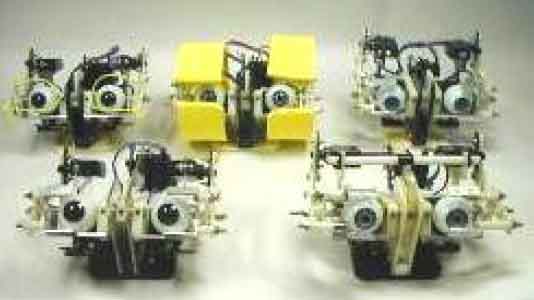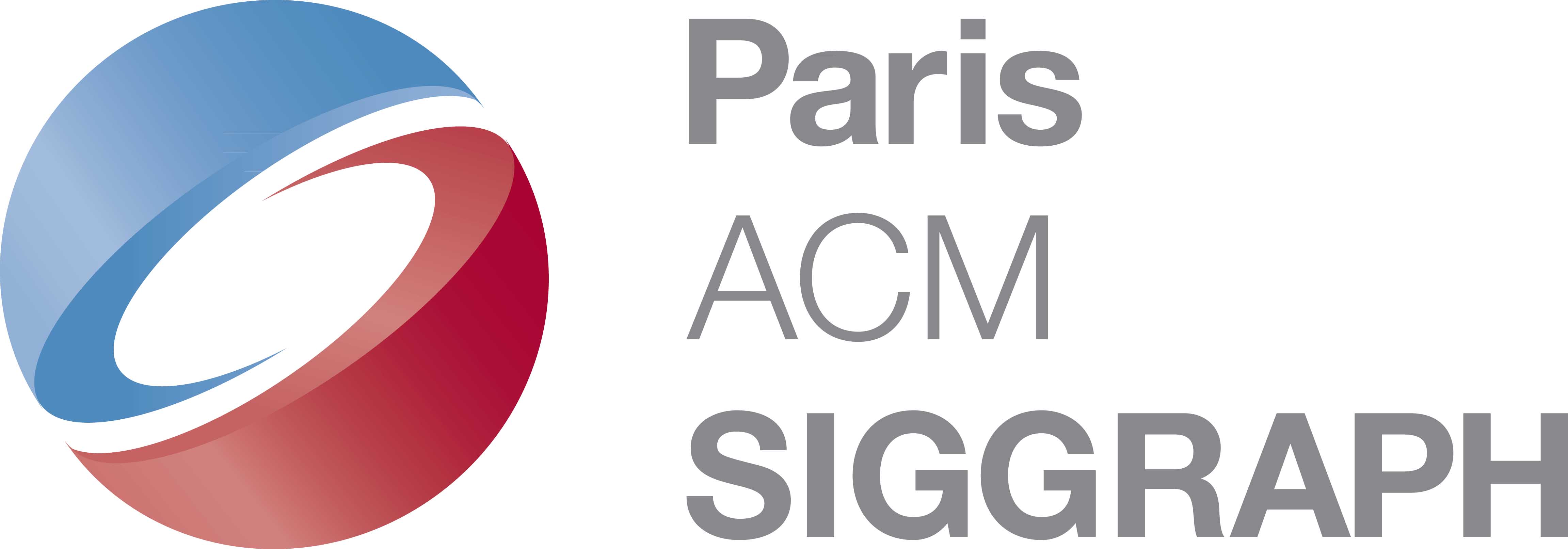Intention
Last revised 9/5/2014. Return to Major concepts. See expression.

Can a machine, a robot, have intentions? In any case, as far as they have, it is important to know them. Robot eyes are a good way to communicatie them. Here a picture from Tokyo Institute of Technology, a communication entitled "Intent Expression Using Eye Robot for Masco Robot System", by Yoichi Yamazaki and al.
Intention is frequently considered as properly human, sometimes shared by animals. We will not discuss here the "reductionism" issue, but develop some points where the word can be applied to machines and paticularly to digital works of art.
The key condition to deal this issue without metaphysical second thoughts is to study intention independentluy of conscience. And then to define it as the formulation of a "goal" by the machine, followed by one or many attempts to reach it. But, to make the term meaningful, the goal may be explicitly formulated by the machine. In an analog feedback system, for instance the goal is implicitly defined by the values chosen by the designer for the different components in the loop (resistors and capacitors for instance). This explictiation of the goal (intention) may be part of a hierarchy of goals. Robotics use this constantly. For instance a mobile robot needs to reload his battery, then to look for an appropriate socket, then to define a succession of moves to reach it, possibly integrating obstacle avoidance.
Such a hierarchy is described by Harold Cohen in his 1979 paper What is an image ? In graphic programs like Aaro or Roxame, the "intention" to draw a line form one point to another one parts itself into a sequence of partly random stemps, notably in order to give the line a "natural" aspect, and not the rigidity of a simple "line to". Roxame can adjust the level of "ubris" which will take her to her target more or less in straight line.
From the artistic standpoint, two points have to be noted:
- in the representation of machines, robots or characters, an expression of their intentions is necessay if the definition level is high (it is one facet of the uncanny valley phenomenon;
- relational/interactive works of art reach higher levels of interaction it they can detect the intentions of the spectators or players.

Automatic driving (Google cars for instance) requires to understant the intentions of the other road users.
A lot of research is dedicated to the machine detection of human intentions. It can be for crippled prostheses, or generally for a better efficiency of human-machine interactions. Automatic car driving, for instance, demands to foretell the actions of other cars.
- Users of automated devices tend to lend them intentions that sometimes have no existence in their programming. Ian Millington (in his Artificial Inelligence for Games, Elsevier 2006) tells that the Pacman's players, a grassoots vintage electronic game, think frequently that the small monsters have sophisticated strategies, including cooperation. Actually, their behavior is only simplistic, with random. Harold Cohen makes similar remarks about the spectators of his first public performances with tortoises (1970's).
- As for human intentions, the simplest scheme considers that we have intentions, explicit or secret, which guide our actions. But moralists like Larochefoucauld show that our intentions are not as good as we would think. And psychoanalysis has deepened the doubts.
Shortly, this isssue remains largely open. Neurosciences give us more and more information about how we intend and decide, and how we could program similar processes in machines.
.
DICCAN'S PARTNERS:

Paris ACM Siggraph, the French chapter of ACM Siggraph, worldwide non-profit organization of computer graphics.
